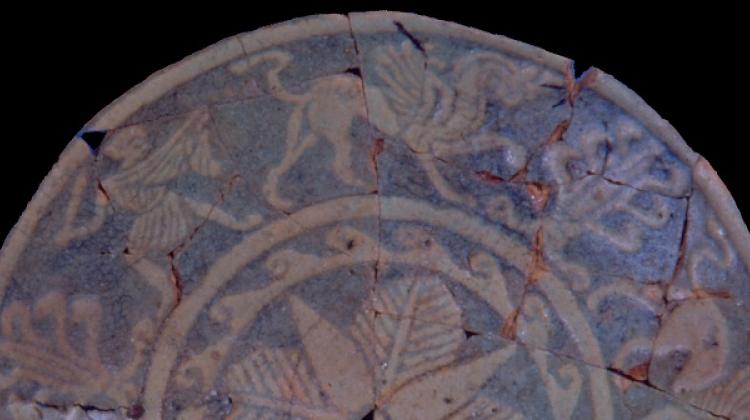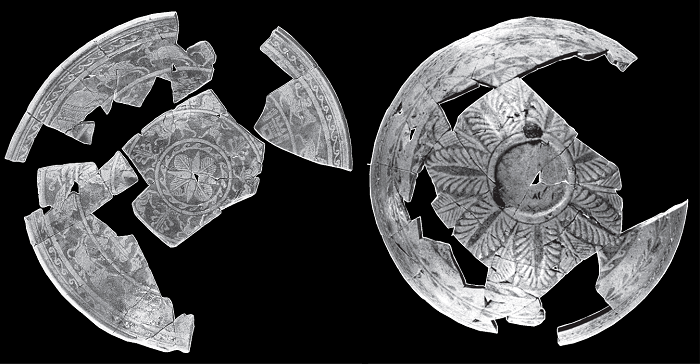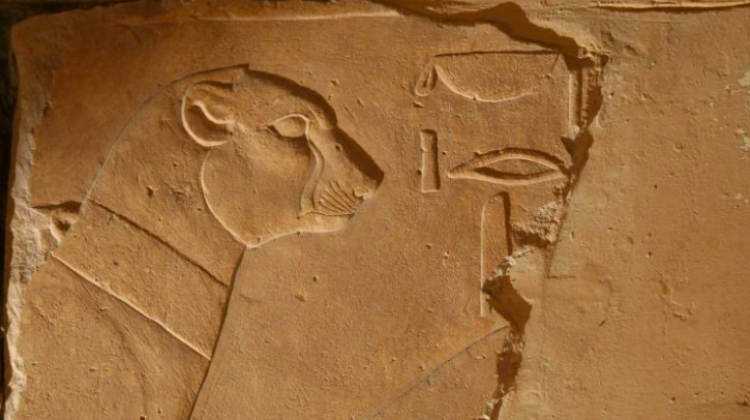Polish scientists reveal what Egyptian faience have to do with gold
 Egyptian vessels discovered in Tell Atrib, photo from: F. Welc, 'Tell Atrib 1985-1995 IV. Faience Objects. PAM Monograph Series 5'
Egyptian vessels discovered in Tell Atrib, photo from: F. Welc, 'Tell Atrib 1985-1995 IV. Faience Objects. PAM Monograph Series 5'
Powdered quartz for the production of faience vessels discovered by Polish archaeologists during excavations in the ancient city of Athribis in the Nile Delta in Egypt, came from tailing heaps that remained after gold mining, scientists from the University of Warsaw and the Cardinal Stefan Wyszynski University have found.
Tell Atrib (Athribis) was an important political centre in the Nile Delta. The Polish-Egyptian archaeological mission operating there in the years 1985-95 discovered the remains of baths, craft workshops and an ancient villa.
Kilns caught the researchers' attention. It was not clear what they could have been used for. Researchers assumed that faience vessels were fired in them, as those were also discovered by Polish researchers. Egyptian faience is the term used to describe objects made of a sintered-quartz ceramic material.
The leader of the research project, engineering geologist Małgorzata Zaremba, a doctoral candidate at the Institute of Archaeology of the Cardinal Stefan Wyszyński University in Warsaw, has just summarized a several-year research project funded by the National Science Centre on faience products from Tell Atrib. It was confirmed that some of the kilns discovered several decades ago could actually be used to fire faience vessels at a temperature of 1050-1150 degrees C.
The researchers also analysed the chemical composition of seven fragments of 2,000 years old bowls discovered at Tell Atrib. These were exclusive items covered with a glaze that gave them a beautiful blue colour and shine. They could both have decorative functions as well as serve as everyday objects in the homes and on the tables of the then elites.
They are decorated with convex and concave motifs typical of Egyptian, Greek and Oriental cultures: from geometric patterns and floral patterns (lotus flowers, leaves, etc.) to figural scenes. Scientists wondered how they were made. They established that two-piece moulds with patterns visible on the vessel surface were used to form the decorations of the bowls. It is difficult to say with certainty what they were made of, because the moulds have not been identified yet. They were probably made of clay or plaster.
Researcher working on the project also precisely determined the composition of the vessels. The mixture from which faience items in Egypt were made consisted of approx. 90 percent powdered quartz, approx. 4 percent burnt lime and bone meal mixture, approx. 2 percent river fluvisol, 2 percent gelatine, 1 percent feldspar flour and 1 percent lead sulphide. Each of these ingredients had an important function during the firing process. For example, gelatine gave the mixture its plasticity.
“All the ingredients for the production of the vessels came from Egypt, but that included its more distant regions. All the samples of faience bowls from Tell Atrib we analysed had been made of high-quality quartz powder from gold-bearing veins in the Eastern Desert in Egypt,” says Zaremba.
She adds that the quartz for the production of faience came from heaps formed after gold mining, meaning that it was obtained from the mines in the Eastern Desert. These sites are located 500-600 km from Athribis, between the Red Sea and the Nile Valley.

When asked whether the findings of the Polish team apply to other faience products from Egypt, Zaremba says that they should not be generalized.
“Due to the several thousand years long tradition of manufacturing faience products in Egypt and the existing differences between individual workshops involved in their production, this is not possible,” she says.
According to the researcher, so far no one has attempted such a comprehensive analysis of faience items, especially their cores, hence the lack of data that could be compared.
“However, the research methodology we have developed and the obtained results may encourage other researchers to conduct further interdisciplinary research on faience objects, not only from the Ptolemaic Period,” she adds.
Faience items were very popular throughout the long history of ancient Egypt. Blue and green figurines, pendants and amulets, e.g. in the shape of the key of life - ankh, were being made of faience in Egypt for several thousand years. To this day, scientists have not determined the exact recipe and production method. Souvenirs stylised as faience products are now sold at tourist stalls at famous monuments, such as the Giza pyramids or the Luxor Temple.
The oldest items made this way in Egypt come from the times of the builders of the first pyramids, over 4,500 years ago. The technology flourished in the middle of the second millennium BCE and later, during the reign of Hatshepsut and Ramesses the Great.
A paper on the analysis of Tell Atrib faience items was recently published in the journal MDPI (https://doi.org/10.3390/ma15186251). Its co-authors are Małgorzata Zaremba, Dr. Jerzy Trzciński - a geoarchaeologist from the University of Warsaw, Krzysztof Nejbert and Grzegorz Kaproń from the Faculty of Geology of the University of Warsaw.
PAP - Science in Poland, Szymon Zdziebłowski
szz/ zan/ kap/
tr. RL
Przed dodaniem komentarza prosimy o zapoznanie z Regulaminem forum serwisu Nauka w Polsce.

















